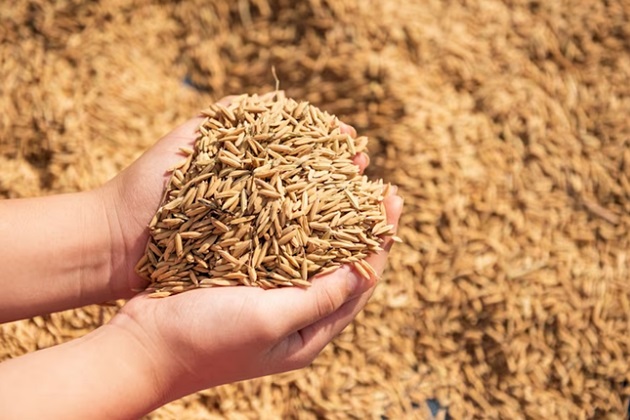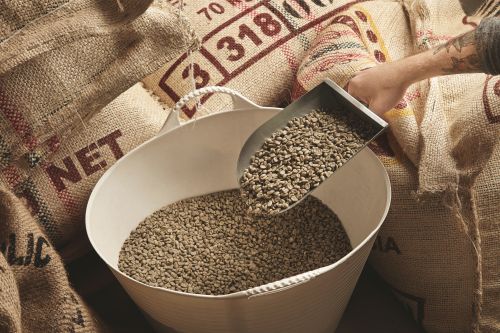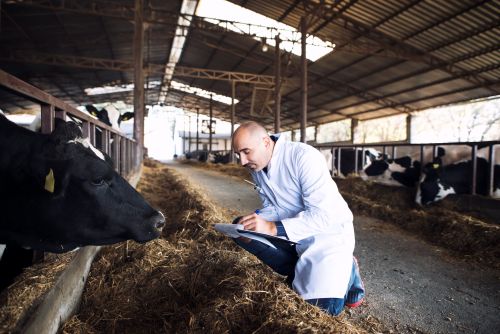
FAO's forecast for global cereal production in 2023 has been revised downwards by 4 million tons compared to the previous figure published in July. However, despite this downgrade this month, global cereal production is seen to increase by 0.9 percent year-on-year, reaching 2,815 million tons, on par with the record achieved in 2021.
Significant Decrease in Wheat
Most of the reduction this month pertains to a decline in global wheat prospects, with global production now set at 781.1 million tons, 2.2 million tons lower than July's expectations. At this level, global production will decrease by 2.6 percent year-on-year but would still be the second-highest result recorded.
The downward revisions made to production forecasts for Canada and the European Union, due to ongoing dry weather conditions that have reduced yields, explain much of this month's decrease.
The wheat production forecast for China was also reduced, though to a lesser extent, as abundant rains in key producing regions reduced yield prospects.
Offsetting some of these reductions, production forecasts were raised for the United States, where updated survey data indicated a larger spring wheat area, as well as for India and Ukraine, reflecting recent government data indicating higher yields than previously anticipated.
Decline in Secondary Cereals
The forecast for global secondary cereal production in 2023 has been reduced by 1.3 million tons compared to July's predictions and now stands at 1,511 million tons, still growing by 2.7 percent annually, with most of the new reductions coming from barley and oats.
The forecast for global barley production was reduced by 2.9 million tons to 143.8 million tons, a 5.6 percent decrease from the previous year. Lower production prospects reflect deteriorating harvest conditions and yield prospects in the European Union and Canada.
Diminished prospects for global oat production are largely due to lower crop outlooks in Canada, the European Union, and the United States, driven by smaller-than-expected planted areas and yields. This is expected to result in a reduction in global oat production in 2023 to an estimated 23.1 million tons, the lowest level in 11 years.
Partially offsetting these declines, global corn production increased by 3.6 million tons and is estimated to reach a record 1,215 million tons. The improved outlook is linked to better crops in Brazil and Ukraine, where corn yields have exceeded previous expectations, more than offsetting the production cuts made for the United States and the European Union.
Regarding rice, FAO's forecast for global production in 2023/24 has also been reduced by 500,000 tons since July, to 523.2 million tons, still 1.1 percent above the reduced level in 2022/23.
The revision primarily reflects lower area estimates for Indonesia's crop in April and reduced expectations for Thailand, where main plantations lagged behind the previous year's levels due to irregular rains and reduced irrigation water reserves.
Excess rains and flooding in the northeastern provinces somewhat reduced harvest expectations for China. These revisions were partially offset by anticipated updates for various other countries, notably Cambodia, Colombia, the Islamic Republic of Iran, Nigeria, and the United States, all largely due to larger plantings than previously anticipated.
Utilization/Consumption Rates
Global cereal usage in 2023/24 is estimated at 2,807 million tons, an increase of 1.5 million tons from July and 22.1 million tons (0.8 percent) above the 2022/23 level.
Increased wheat use in India, due to expected domestic production and greater availability, is mostly behind a 2.3 million-ton upward revision to the global wheat utilization forecast for 2023/24, now set at 785 million tons, up 0.6 percent from 2022/23 levels.
The forecast for total secondary cereal utilization in 2023/24 is set at 1,501 million tons, down 1.6 million tons from the July forecast but up 1.2 percent from the estimated 2022/23 level.
Anticipated lower barley usage for feed in Canada and the European Union is behind this month's downward revision, reducing the overall forecast for barley utilization in 2023/24 by 0.8 percent below the previous season.
Global rice usage in 2023/24 is now set at 520.9 million tons, up by 800,000 tons from July's expectations and generally stable year-on-year. Although a tighter global supply outlook has led to downgraded forecasts for several Asian and African countries, these revisions have been outweighed by an upward adjustment made for India, where another relatively low level is expected.
A large harvest alongside reduced exports could keep food supplies above pre-pandemic levels for another season, while volumes destined for ethanol production remain on an expansion trend.
Stocks Forecast
At 878 million tons, the forecast for global cereal stocks by the end of the 2023/2024 seasons remains unchanged from July, indicating an increase of 18.6 million tons (2.2 percent) over opening levels.
The resulting ratio of global stocks to use for cereals in 2023/24 would be 30.5 percent, almost unchanged from the 30.6 percent level in 2022/23, indicating a historically comfortable level of global supply. Global wheat stocks are estimated to increase marginally, by 0.3 percent above the opening level to 315 million tons, reflecting a 1.3 million-ton upward revision this month, mainly concentrated in Russia, Turkey, Ukraine, and the United States.
The forecast for total global secondary cereal stocks rises to 365 million tons, up 4.3 percent over the opening level, despite a 1.0 million-ton reduction in this month's forecast, mostly due to downgraded global stocks of barley and oats, which offset an upward revision to global corn stocks.
Despite a downward revision of 435,000 tons, global rice stocks at the end of the 2023/24 marketing season are estimated to reach a historical high of 198.1 million tons, up 1.4 percent from the reduced level in 2022/23.
As in previous seasons, nearly three-quarters of this volume are expected to be held by China and India, with India, in particular, accounting for much of the anticipated expansion in global stocks in 2023/24.
Elsewhere, although some replenishments of stocks are anticipated, especially in Indonesia, Nigeria, Pakistan, and the United States, these are likely to be insufficient to offset the anticipated reductions in other countries. Overall, total rice reserves held by countries other than China and India are ending with a second consecutive contraction, down to a four-year low of 51.4 million tons.
Trade Development
FAO's forecast for global cereal trade in 2023/24 has been reduced by 6.5 million tons from July to 466 million tons, 1.7 percent (7.9 million tons) below the 2022/23 level. The forecast for global wheat trade in 2023/24 (July/June) was reduced from the previous July report by 1.9 million tons to 193 million tons, which would be 3.5 percent below the 2022/23 level.
The anticipated contraction from the previous season is driven by an expected decline in exports from Australia due to reduced production, as well as Ukraine due to ongoing trade disruptions from the ongoing war and lower import demand from China, the European Union, and Turkey. Global trade in secondary cereals in 2023/24 (July/June) is estimated at 220 million tons, down 1.6 million tons from July and 0.8 percent below the 2022/23 level.
A reduction in the forecast for global corn trade in 2023/24, representing the majority of this month's downward revision, mainly reflects smaller-than-expected corn sales by the United States due to reduced production prospects and Ukraine due to the recent cessation of the Black Sea Grain Initiative.
FAO has reduced its forecasts for international rice trade by 600,000 tons in 2023 and by 3.0 million tons in 2024, starting from July. The revisions largely follow recent intensifications of rice export restrictions by India, the world's leading rice exporter.
While the duration and extent of these restrictions remain uncertain at this stage, given the leeway offered by Indian officials for exceptions to be granted for food security reasons and government requests, if they prove to be extended and associated with potentially El Niño-induced production constraints in a few other Asian exporting countries, they could keep the anticipated recovery in global rice trade in 2024 below 1.0 million tons, at 53.3 million tons.





